Snowshoe comparison – hi-tech vs traditional
I first discovered the pleasures of snowshoeing while on a 3-day mushing expedition in the Rockies in 1991. I’ve had a traditional bent-wood set of snowshoes for many years, but haven’t put very many miles on them, usually opting to use cross-country skis instead. Cathy and I have found that the skis get less and less use – that snowshoes are better suited to the trails that we use regularly – so went out 2 weeks ago and bought some hi-tech snowshoes. I got a pair of 25-inch Tubbs Journey Snowshoes and Cathy got a pair of 25-inch Tubbs Frontier Snowshoes. Yesterday, we went out for a loop around the property, and I wore a traditional snowshoe on one foot and one of the Tubbs on the other foot, to see how each step of the process, and the overall experience, compare.
As you can see, I’m comparing snowshoes that are very different in appearance. The traditional snowshoe is 10½ inches wide and 47 inches long. The Tubbs Journey is 8½ inches wide and 25 inches long. Although I didn’t weigh them, my impression is that the weight difference is negligible.
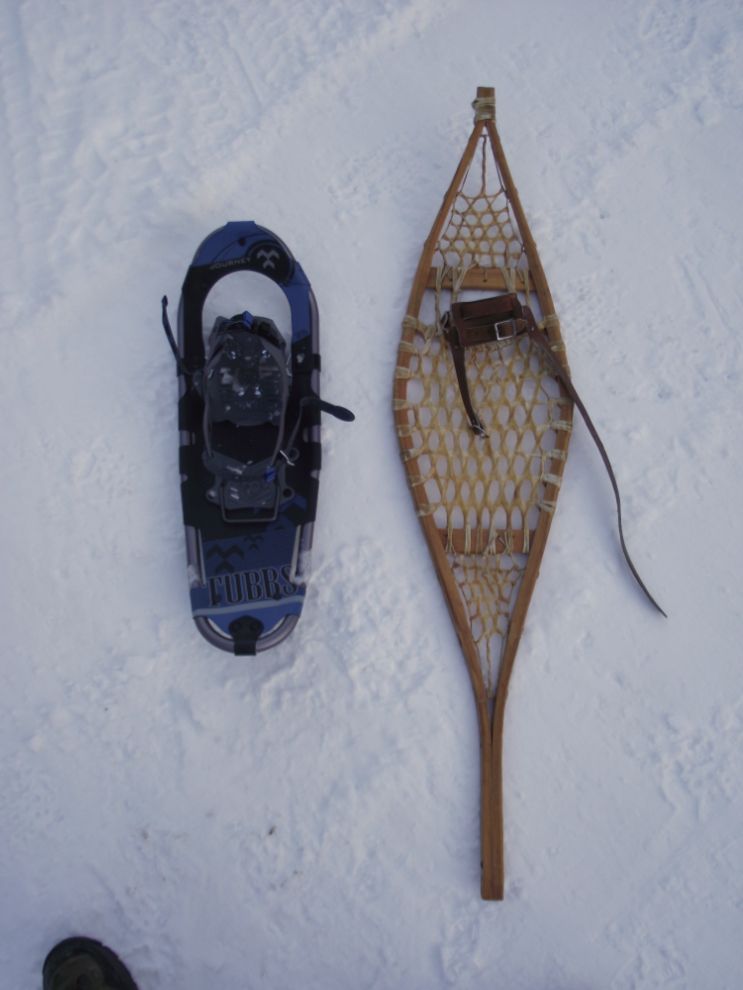
I wear light hiking boots, with gaiters if I’m going to be breaking new trail. The binding on the traditional snowshoe is all leather and dead simple – step into the front pocket, pull a loop around the back of the boot and attach with a single buckle.

The Tubbs binding is approximately twice as much work – step into the front pocket, pull the strap tight, pull a loop around the back of the boot, attach with a single buckle, and tuck the extra loop into a holder.
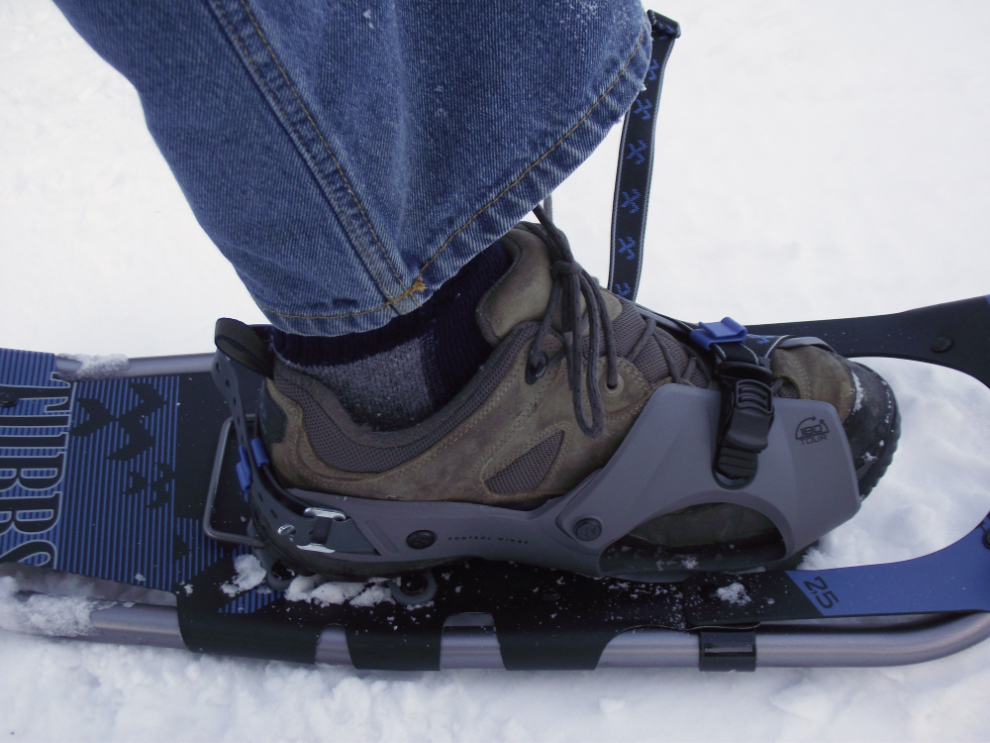
While the traditional binding is easier to attach, it has no side-movement stability for the heel.
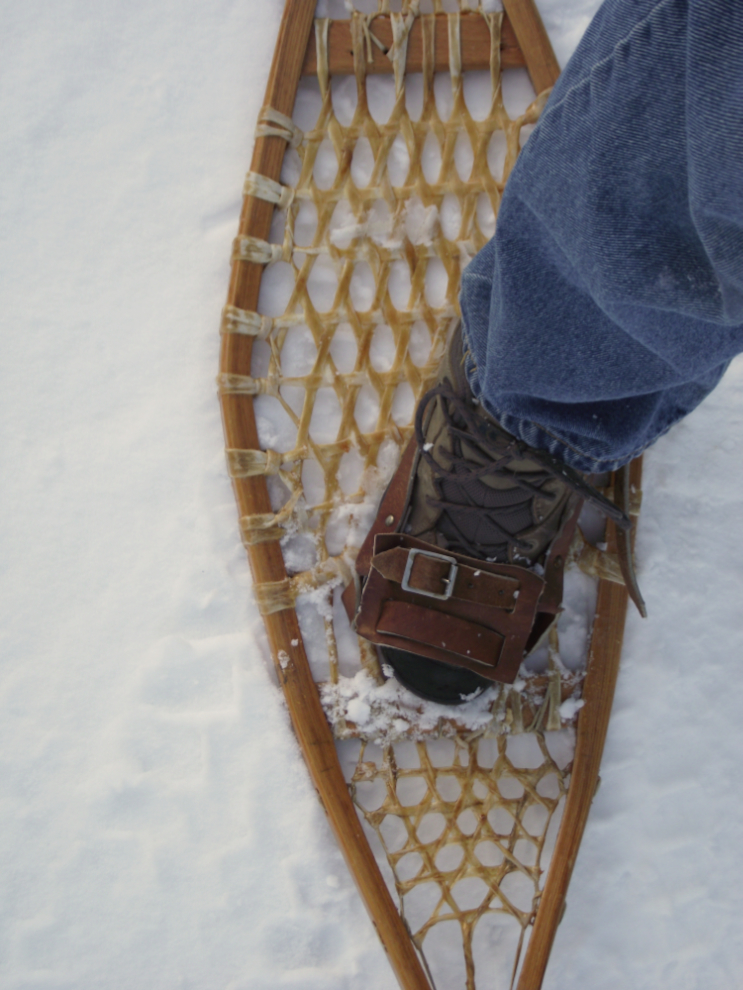
The Tubbs, on the other hand, is extremely stable.
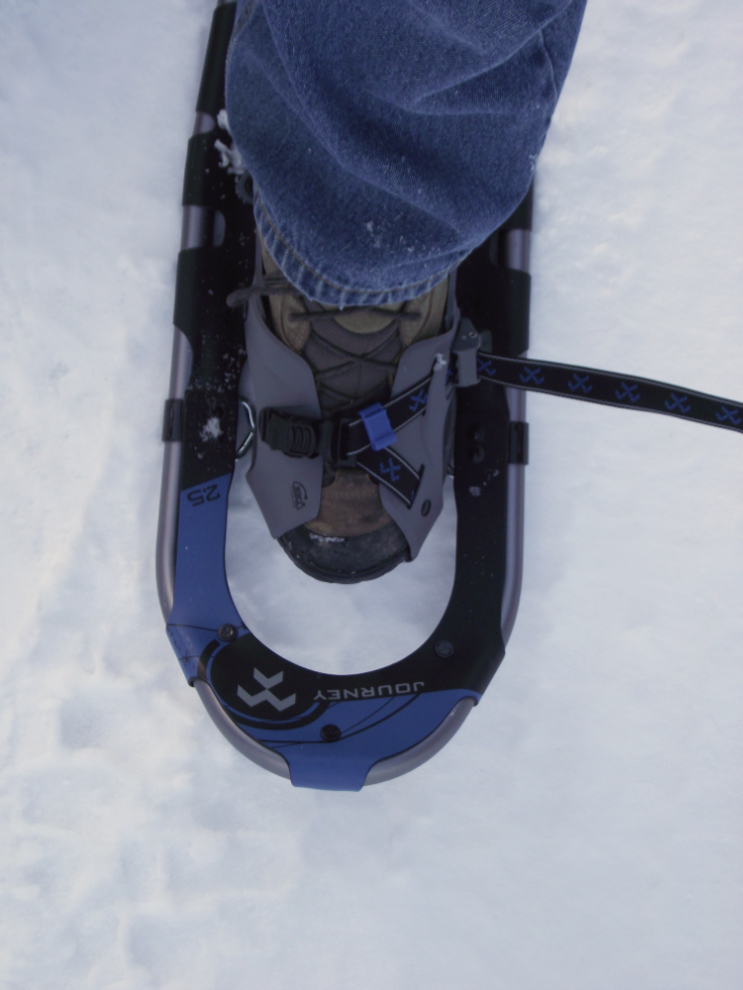
One of the crucial tests, of course, is the flotation value – how deep do you sink into the snow? Not surprisingly, the traditional snowshoe won here – it’s tough to argue against more surface area, particularly in the extremely dry, powdery snow we have in the Yukon. The depth of sinking, though, wasn’t dramatically different – about 5 inches for the traditional, 6 inches for the hi-tech. The solution to that would be to simply buy a longer set of Tubbs, and I already wish that I would have bought 30-inchers instead of 25 (though I’m well within the weight rating for 25s). If I start putting a lot of miles on, I may even upgrade.
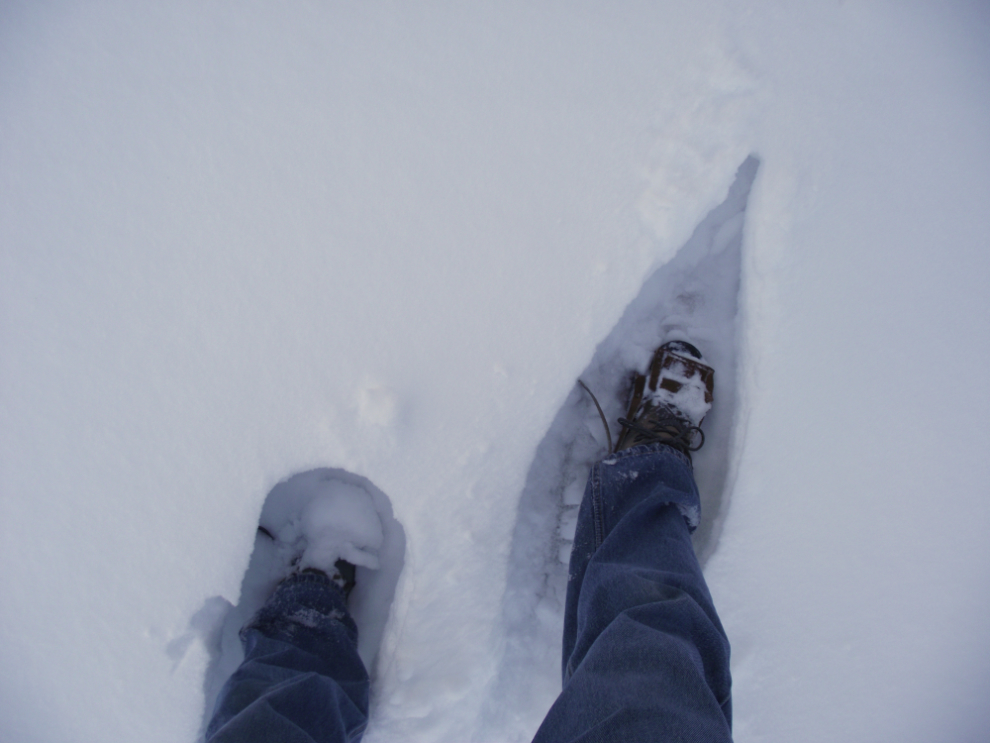
Kayla doesn’t worry about flotation, just bulldozes through! Actually, deep snow is as tiring for her as it is for someone with no snowshoes, or too-small snowshoes.
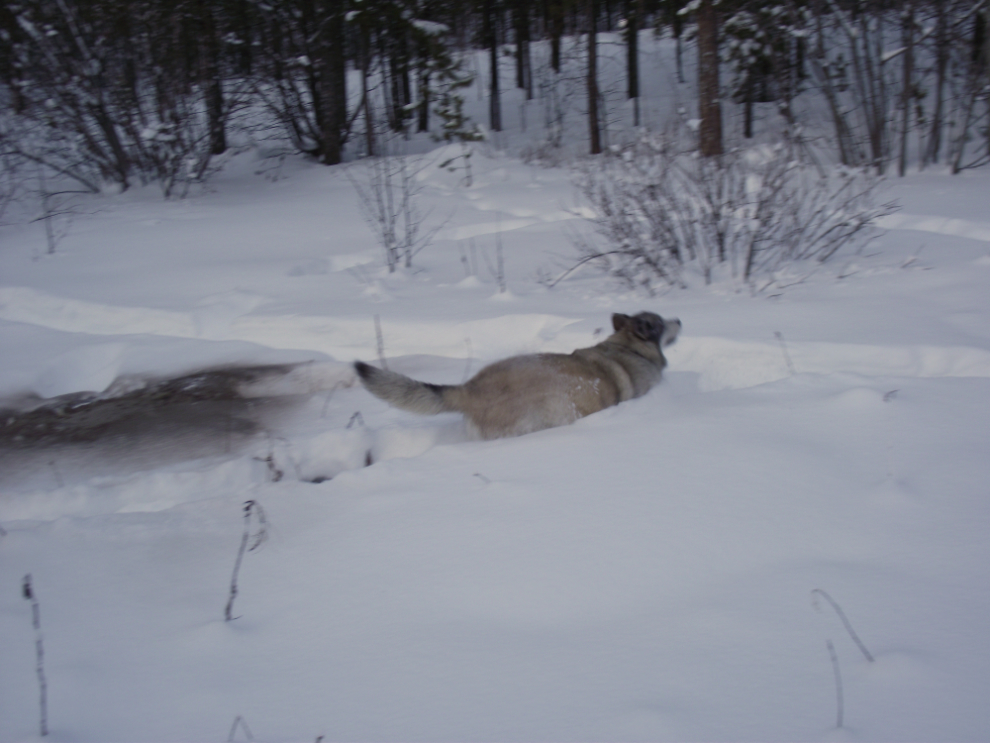
This is one of the biggest differences between the traditional and hi-tech snowshoes – the crampons at both toe and heel on the Tubbs. On either packed moderate hills or steep powder hills, these make a huge difference.
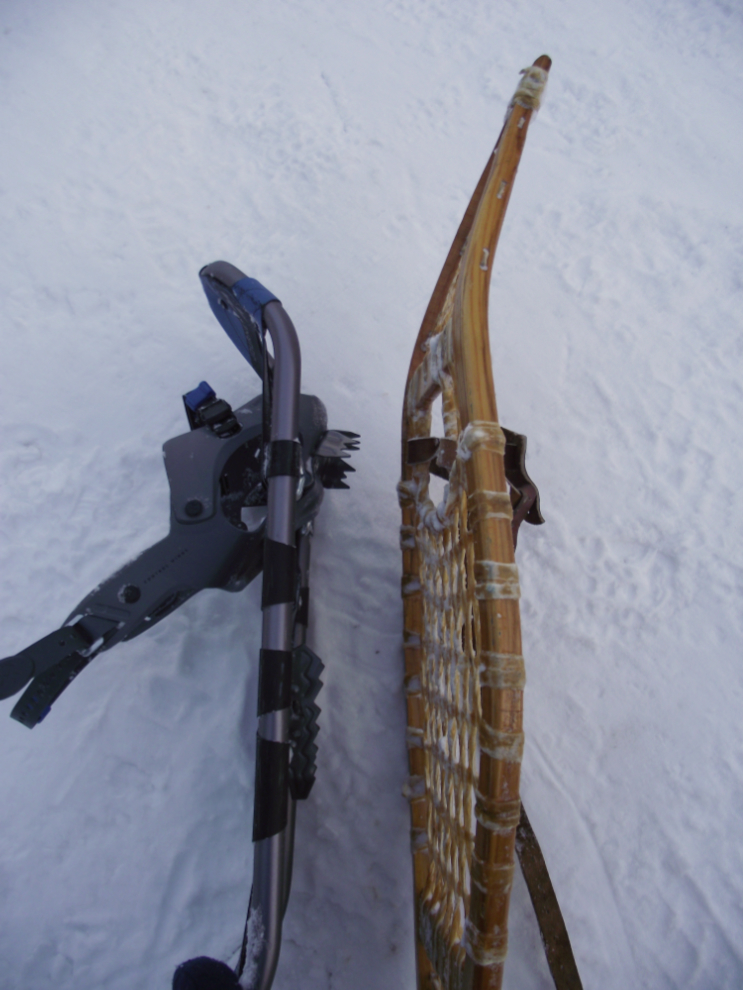
I expected to be able to make a clear decision about which of the snowshoes offers a better experience, but it didn’t turn out that way. For the sort of light recreational walk I did, both are excellent. For longer backcountry use, I’ll take the Tubbs, though – the side stability is enough to make that decision easy. The age helps, too – if the old leather strap on my traditional snowshoes were to break, I’d certainly need a roll of duct tape with me to fashion a new strap 🙂
This is typical of the trails around our property and other areas in Mary Lake – most are just wide enough for a snowmobile.
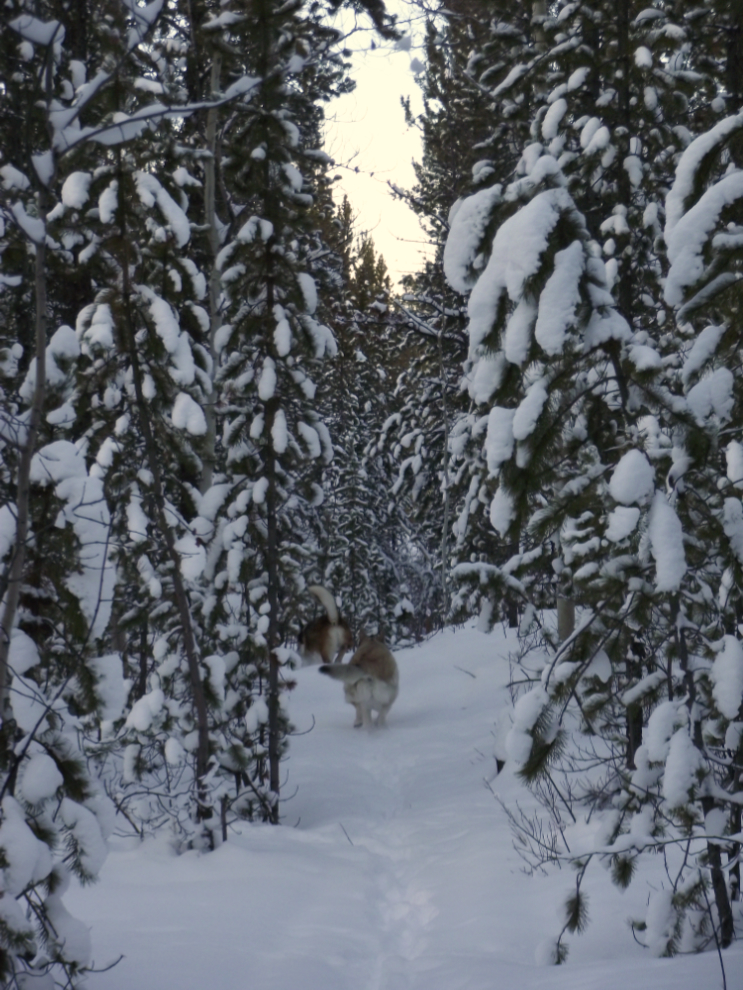
Here’s a short video from Tubbs about the basics of choosing the right snowshoe so you can join in the fun!